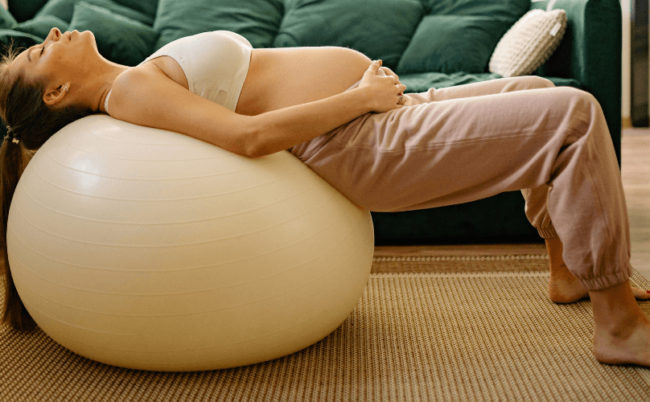We often hear for the first time about perineal rehabilitation after childbirth, but do you know when to start it? And until when is it possible to do perineal rehabilitation sessions? Because you may not know it, but it is possible to do perineal rehabilitation at any age, and not just after giving birth! We tell you everything.
Rehabilitation of the perineum after childbirth
The aim of perineal rehabilitation sessions is to strengthen the pelvic muscles and to prevent problems from occurring in this fragile area. If symptoms are present (urinary incontinence, organ descent, etc.), the rehabilitation sessions aim to reduce them and prevent them from getting worse. During pregnancy, the perineum is put to the test.
Notably during childbirth, the perineum is very stressed and can be damaged. This is why the perineum needs a rest time before starting the strengthening sessions. But then, when is the right time to start perineal rehabilitation?
Starting your rehabilitation after a vaginal birth
Generally, health professionals recommendwait 6 to 8 weeks after giving birth to begin perineal rehabilitation. At this time, it is recommended to make an appointment with a gynecologist or midwife for a postnatal consultation. Above all, do not start your perineal rehabilitation before this appointment.
On the other hand, if you wish wait a few more weeks before starting because childbirth was traumatic or the postpartum period was difficult, this is in no way a problem.
Before starting your rehabilitation: the perineal assessment
One of the goals of the postnatal check-up consultation is toassess the overall condition of your pelvic floor. The healthcare professional then carries out a vaginal examination to check several points:
- assess the overall tone of your perineum
- check that the organs have returned to their initial position.
- check the healing of the episiotomy
It is at the time of this control appointment that rehabilitation sessions may be prescribed to you. There are generally 10 prescribed as part of post-natal rehabilitation. This is also theHealth Insurance who takes care of them and reimburses them in full.
If you do not start your sessions immediately after this consultation, keep in mind that your prescription is valid for one year. Then, after this period, you will need to request a new prescription from a healthcare professional.
Rehabilitate your perineum after a cesarean delivery
Contrary to popular belief, it is not because you gave birth by cesarean section that you are exempt from perineal rehabilitation!

Your perineum also suffered from the increasing weight of your baby for 9 months. Your fabrics can therefore be released and you will be able to see appear urinary leakage.
The strong hormone concentration present in the body throughout pregnancy and during breastfeeding, for example, can also have an influence on your pelvic organs.
Even after a cesarean delivery, you must therefore make an appointment with a health professional to make a perineal assessment and check the condition of your pelvic floor. Perineal rehabilitation sessions may also be prescribed and reimbursed, as in the case of a vaginal birth.
You can also ask your physiotherapist or midwife if your scar is painful. They can teach you how to massage it to make it sleepy and above all help you reclaim this area of your body.
How long does postnatal perineal rehabilitation last?
In most cases, if your healthcare professional has prescribed rehabilitation sessions for you, it is very likely that it is for 10 sessions. It is then the physiotherapist or midwife who accompanies you in this rehabilitation who can adapt the number of sessions, if necessary.
Depending on the muscular condition of your pelvic floor and if there are not many after-effects, 5 to 10 sessions may be enough. The proposed pace is generallyone to two sessions per week depending on availability.
If your perineum has suffered significant trauma during childbirth or if you suffer from urinary leakage or organ descent, more than 10 sessions will most likely be necessary to improve your condition.

In all cases, when the office sessions are over, health professionals strongly recommendperform home exercises regularly to continue to strengthen your perineum. Many systems exist to allow you to continue your perineal rehabilitation at home.
Learn more about the Emy probe
Until when can we do perineal rehabilitation?
Good news, there is no age to start perineal rehabilitation ! The main goal of a rehabilitation session is to build muscle and strengthen your perineum. So even if you gave birth a long time ago, there are multiple reasons for your perineum to weaken or loosen at some point in your life. Certain signs can alert you:
- the appearance of disorders or urinary leakage ;
- a feeling of heaviness in the lower abdomen;
- the beginning of organ descent;
- a loss of sensation during sex.
Most of the time, in re-toning your perineum using rehabilitation sessions, the problem can be dealt with. If you are in one of these situations, do not hesitate to consult a healthcare professional. He will be able to support you in setting up this rehabilitation.

To avoid problems, you must keep a toned perineum throughout his life. For this, it is necessary regularly train your pelvic floor muscles using exercises.
Just as you regularly work your abdominals, the perineum is a muscle (admittedly invisible) but it also needs to be tone up in the long term. Our advice? Start making today regular way of exercises at your place.
Who can do your perineal rehabilitation with?
It is important to call on a healthcare professional as part of your perineal rehabilitation. We are not all in the same boat when it comes to our perineum. Some are free of their small urinary leaks after 10 sessions with their healthcare professional. While others see these reappear in the last 15 days after completing their rehabilitation.

The same goes for the good contraction of the perineum. You sometimes think, wrongly, that you are correctly contracting your perineum while you are contracting your buttocks or your abdominals. It is therefore imperative to start your rehabilitation with a professional, physiotherapist Or midwife, to make a complete perineal assessment and learn to properly contract your pelvic floor.
Unfortunately, it is not always easy to make an appointment with a healthcare professional. Medical deserts, already very busy schedules, newborn at home, organizing to get to appointments... there is no shortage of excuses! So if you cannot immediately make an appointment quickly and you have already mastered the contraction of your perineum, you can now begin to train at home.
To finish, we leave you with the testimony of Léa, better known as Jenesuispasjolie. This young mother tells us about her feedback on her perineal rehabilitation with her physiotherapist and her home exercises.






